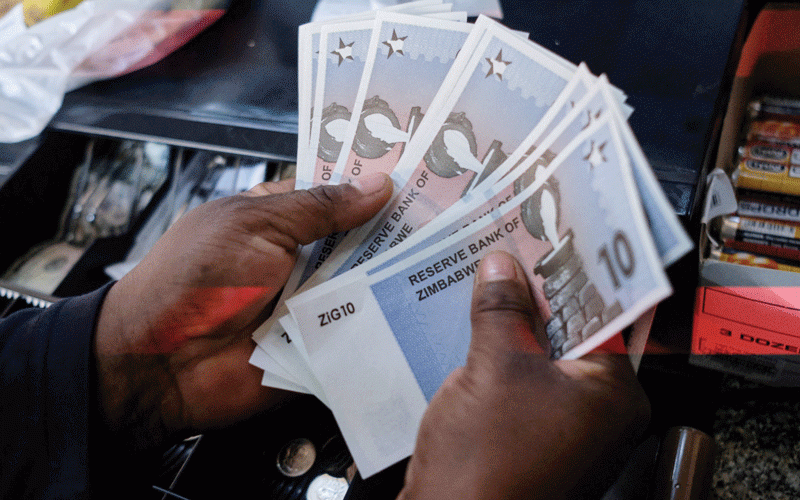
THE Zimbabwe Gold (ZiG) currency turns one tomorrow in what has been a roller-coaster year for the local unit.
The structured currency, backed by some minerals and cash reserves, debuted on April 8 last year in government’s sixth attempt to establish a stable currency in over a decade.
It replaced the Zimdollar, which had been routed by major currencies, especially the United States dollar.
The banished Zimdollar lost its functions as store of value or medium of exchange with the economy re-dollarising.
To its credit, the ZiG has created stability in the economy with the premium on the United States dollar narrowing to 20% in March this year from 100% in September last year, according to the central bank.
Inflation has headed southwards with month-on-month inflation at -0,1 % in March this year from a peak of 37,2% in October 2024.
The central bank said it had increased the reserves that cover the ZiG to US$550 million at the end of January from US$285 million when the local currency came into being, providing more than three times cover for reserve money of ZiG3,5 billion.
While the ZiG has created stability, it has, like its predecessors, failed to penetrate the informal sector. Government must take the blame for that. There is clamour for the use of the local currency in buying fuel and pay passport fees, which increase confidence in the currency. The government said it was working on modalities in what critics say shows its reluctance for the ZiG to spread to the two areas.
- ‘Inflation could shoot to 700% by April next year’
- New perspectives: Inflation control critical for economic growth
- Inflation spike: Why interest rates aren’t the answer
- Village Rhapsody: Govt must ensure that devolution works
Keep Reading
ZiG is being used as change in the informal sector as traders prefer the United States dollar to the local currency.
Since last year, some members of the ZiG family — ZiG1, ZiG2 and ZiG5 — have been elbowed out of circulation by the informal sector.
This has left ZiG10 and ZiG20 as the only members in circulation.
This shows that there is insufficient confidence in the currency despite authorities claiming otherwise.
The tough monetary and fiscal policies put in place to buttress the local currency have created a liquidity crunch amid fears this could accelerate the re-dollarisation pace.
The tight thrust has created a illiquidity in the economy, forcing the central bank to introduce the Targeted Finance Facility to support productive sectors of the economy.
ZiG has depreciated since its debut last year.
It was trading at ZiG26,7864 against the United States dollar on Friday last week from ZiG13,5616 on its debut. This means that the ZiG lost about half (49,3%) of its value in one year.
While monetary authorities are toasting the stability of the ZiG, more needs to be done to promote the use of the local currency as part of the de-dollarisation road map.
The informal sector will only find the ZiG attractive if they can access foreign currency in the formal channels without hassle. We believe the smooth operations of bureaux de change will be key in this regard. Until one in able to convert the ZiG to the United States dollar in formal channels with no questions asked, the local currency will not be as effective as it should be.











